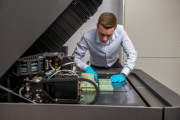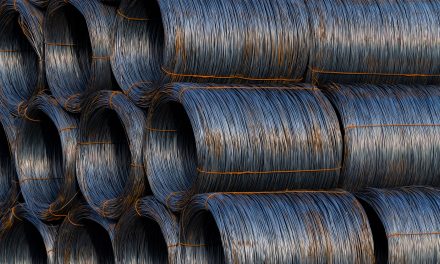 We know that the earlier you learn about a design change, the easier it is to implement it. It is our experience that making the most of rapid prototyping technology early in the design process brings significant savings in time and cost of reworking a design further down the line.
We know that the earlier you learn about a design change, the easier it is to implement it. It is our experience that making the most of rapid prototyping technology early in the design process brings significant savings in time and cost of reworking a design further down the line.
The beauty of rapid prototyping is the ability to visualise your design and test the user experience of the final product. We have experienced that for many companies the prototype stage commonly results after the design process. Now, imagine if you were able to validate your design much earlier in its development.
Test Before You Invest
If you are designing a part for injection moulding, there are a number of basic rules to consider: wall thickness and uniformity come quite high up the list because this is where cost savings are highest. Troublesome warpage can be minimised with gussets and coring, isolating a boss from a corner can mitigate sink marks. Crucial to designing for strength are the orientation of ribs and there is the need to incorporate a draft angle for better de-moulding and so the list goes on. Imagine then, if you could freely tap into the expertise of a manufacturing partner who would consider all the nuances of injection moulding during your plastic part design starting with the production of your very first prototype.
 Validate Your Design
Validate Your Design
At Rutland Plastics, we have structured a 3D Printing Bureau service where we fully utilise our expertise in designing for injection moulding. Each and every 3D printing enquiry comes directly into the engineering design department, here it undergoes an appraisal by one of the design team for prototyping. Additionally, we proactively address product issues, flagging up concerns that may affect the overall manufacturability later in the production process. We are happy to offer design suggestions; most certainly this does not distract from the specialism of the designer but we believe sharing our expertise helps integrate all the core skills available from both parties to achieve greater design effiencies.
 Variety and Versatility
Variety and Versatility
Our Stratasys Connex 3D printer gives us ability to combine multiple materials in varying proportions, which means that unlike other rapid prototyping methods, assemblies comprising different materials can be produced in a single build – eliminating the need to glue together parts made with different materials. Up to 14 different materials may be fabricated within a single printed part, and artistic details to functional markings such as text and logos can be incorporated. We offer more than a 100 material options that can simulate Polypropylene, ABS, transparent, high temperature and a wide range of rubber-like materials from Shore 25A to 95A.
 Test Sample Success
Test Sample Success
Our customer Rega, specialists of high end audio equipment and known for their streamlined products are a perfect illustration of how process works. When they approached us to produce a new tool for their turn table dust cover, it was acknowledged that moulding the dust cover had historically proved problematic because of the minimalistic product styling. The design team at Rutland Plastics instigated a number of subtle design revisions to the dust cover that would greatly improve the manufacturability. These design revisions were validated using our Stratasys Objet Connex 3D printer to build test samples. To quote Ky Gandy, Rega Supplier Coordinator, “Rutland Plastics ability to show the redesign vision in a clear tangible format was a huge bonus for us agreeing to the adaptations suggested by their designers”.
Whether you have a full CAD model or just a sketch we can help you to optimise your design in terms of physical shape, ease of production, cost and performance early in the process to make it easier to manufacture with excellent overall quality when the time comes.

